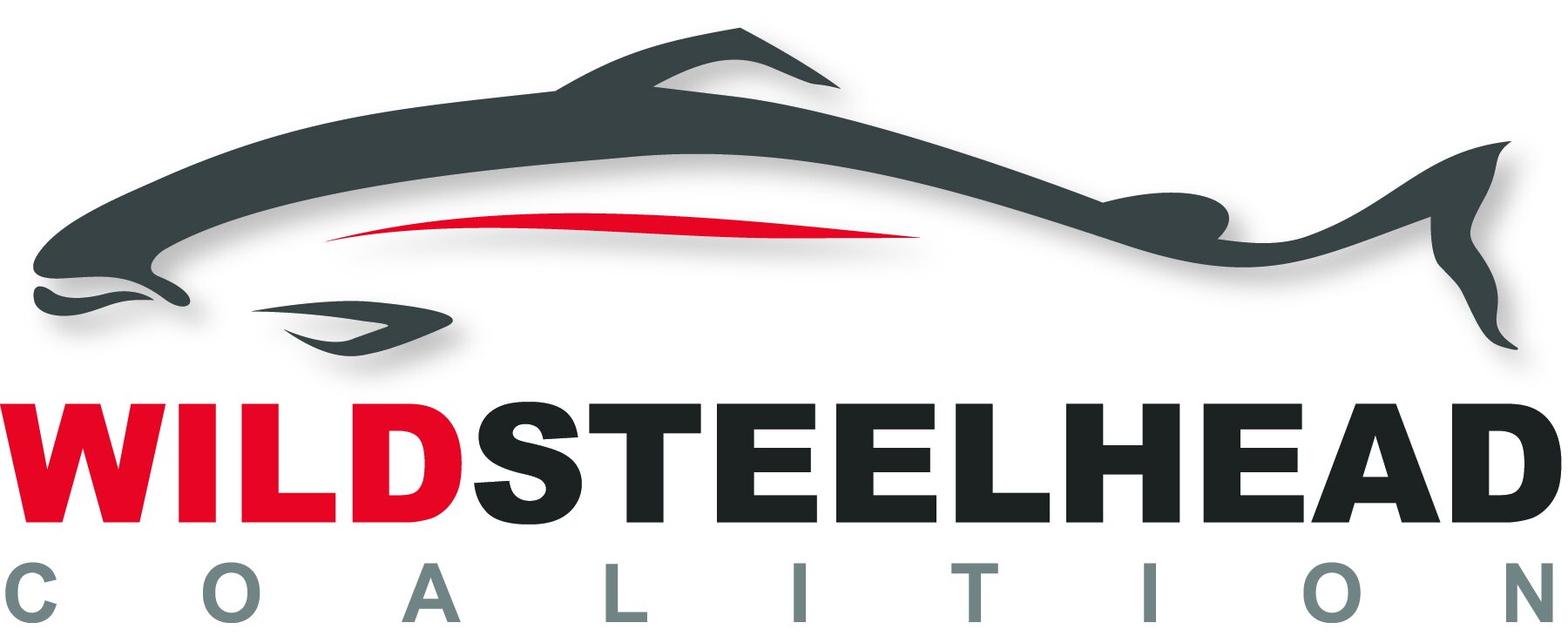Learning to Swim: The Early Life of Steelhead and its Implications for Management - Part Two
In Part 1, we left off with an outstanding question that has not been evaluated for steelhead: Do their offspring stay close to home like Atlantic Salmon and Brown Trout, or do they disperse broadly? In review, if the fry are highly mobile, then high density and intense competition would likely lead them to seek out unoccupied habitats rather than reduce survival. If they stay close to home, then high densities will lead to increased mortality, and in that case, we must know something about the distribution of spawning adults to make inferences about habitat capacity.
My research has sought to answer this question about the capacity for early life dispersal in steelhead. Redd counts were conducted in the Skagit River and two tributaries through the spawning season to accomplish this. A small field crew and I then returned in the summer of 2022 and tracked the distribution of fry from redds during the early critical period via snorkeling. As is often the case with fieldwork, the weather and flows were anything but cooperative, but we made some interesting observations and could sample enough redds to provide a reasonable picture of the dispersal capacity of steelhead fry during the first summer of life.
Steelhead fry emerge from the gravel later in spring than their Pacific Salmon cousins, likely because they have chosen a different strategy for their fry. The summer of 2022, when most of my research was completed, saw a high and delayed period of snowmelt runoff in the Skagit. In our study area, steelhead fry were non-detectable during day or night snorkel surveys until the third week of July, long after many of them would have been predicted to be out of the gravel. In contrast, Coho fry was active and ubiquitous during our surveys, seemingly unphased by the shift from a gravel stream bottom to hanging out in the now inundated streamside bushes. Once the flows began to ease in mid-July, steelhead fry appeared to respond to the declining hydrograph and emerged en masse from the gravel. While the experimental design was unable to identify the patterns of emergence in relation to flow fully, what appeared to occur was that the offspring of early spawning steelhead had either emerged, then re-entered the gravel as runoff increased, or simply stayed put subsurface until the conditions were favorable. This extended time in the gravel appeared to offset the advantages of increased growth and habitat choice that is often conferred to the offspring of early spawning steelhead (Chandler and Bjornn 1988, Einum and Fleming 2000) and instead to lead to poor survival of these early fry.
While results are still preliminary, I have found that the fry dispersal does appear to be limited in the same manner as their Atlantic cousins. Snorkel surveys tracking fry dispersal from redds in the mainstem Skagit have shown that even when redds are clustered, very few fry successfully move downstream or up into adjacent habitats, and greater than 90% of observed fry stay within a few hundred meters of the redd during the first summer. While the high runoff period was frustrating because it shortened the time available for data collection, it provided an interesting, unplanned experiment. The sustained period of high flows did not appear to increase the propensity for steelhead fry to disperse, or at least not successfully. Rather it seemed they hunkered down in their drafty gravel homes and waited for summer to start.
In many ways, this is exactly what we should expect from species like steelhead whose offspring rear in freshwater for long periods. While salmon and steelhead are known to be outliers among fish for producing relatively few large eggs and large juveniles by default, the fry are still quite small and vulnerable when they emerge. Since the parents aren’t around to show their offspring the ropes, they have few options to increase their survival. But perhaps the best thing they can do is leave them in a good spot to rear. This is one reason why homing is so fundamental to steelhead, they are reducing uncertainty and building on past spawning success; if it worked for them, it will likely work for their offspring. Indeed, it has been found that for Atlantic Salmon and other migratory species, individuals who are home to their natal location produce more offspring than those who stray (Mobley 2019).
The same phenomenon we see with spatial distribution can be true for time. If you were running a hotel you wouldn’t cater to just one or two conventions a year, you would try and attract the most diverse clientele to fill your rooms year-round, right? Steelhead are no different.
Recovery plans are structured around four characteristics needed for a viable population: abundance, productivity, spatial structure, and diversity (McElhaney, 2000). While we traditionally manage for abundance and productivity because they are easily measured with established methods, we often ignore the other two metrics of diversity and spatial structure that underpin abundance. Without a way to measure or develop goals for spatial structure and diversity, it isn't easy to know if they are trending up, down, or stable and what we might do to maintain and rebuild these components as needed.
There are many ways to incorporate spatial distribution and diversity into a management strategy. We know that distribution and abundance are linked where, at higher abundances, the spatial distribution increases, so it could be as simple as experimentally increasing escapement goals in some places and observing the response. If the habitat is truly underutilized, there should be an expansion of distribution and a corresponding increase in abundance.
An important point to understand here is that recovery will be multi-generational. Because steelhead homes with high site fidelity, we need large escapements, which may be significantly larger than the existing escapement goal, to force spawning adults into underutilized habitats. Dispersal is a risky strategy, and on average, those who stray will produce fewer offspring than those who return home. This means that it can take multiple spawning cycles to not only occupy new habitats but to maximize the capacity of those habitats. This why large run sizes may be critically important to recovery, they allow depleted populations to test the capacity of the habitat. Experiments that test habitat capacity could be invaluable as we theoretically increase capacity by reconnecting and restoring habitat. After all, the funding for this work is in the name of recovery. When did you last see or hear anyone use the phrase “Steelhead Maintenance”?
While snorkeling and observing behavioral patterns is incredibly fun and rewarding, this work is not always enough to improve the status of steelhead. Accordingly, the next steps in this project are applying methods that can quantify the spatial distribution of adults in a manner that can be used in management and recovery planning. This will hopefully provide an update not only to the methods we use to estimate habitat capacity but also lead to a mechanism for the development of goals for spatial distribution and life history diversity.
Ultimately, this seemingly minor question of how far fry disperse from their redds may have big implications for the recovery of steelhead populations. While habitat is critically important, the neon “Vacancy” and “Free Continental Breakfast” signs may not be enough to entice steelhead back to empty December rivers and underutilized habitats, and they may instead be waiting for an “Under New Management” sign that can increase distribution and facilitate the breadth of their diversity.
Authors note: A huge thank you goes out to Seattle City Light and NOAA Fisheries for providing the funding for this research, and to The Wild Steelhead Coalition and North Sound Chapter of Trout Unlimited for helping make this work possible through scholarships, and last but not least, to the University of Washington’s School of Aquatic and Fishery Sciences for invaluable education and mentorship.
Literature Cited
Bley, P. W., & Moring, J. R. (1988). Freshwater and ocean survival of Atlantic salmon and steelhead: a synopsis (p. 88). US Department of the Interior, Fish and Wildlife Service.
Chandler, G. L., & Bjornn, T. C. (1988). Abundance, growth, and interactions of juvenile steelhead relative to time of emergence. Transactions of the American Fisheries Society, 117(5), 432-443.
Einum, S., & Fleming, I. A. (2000). Selection against late emergence and small offspring in Atlantic salmon (Salmo salar). Evolution, 54(2), 628-639.
Einum, S., Nislow, K. H., Mckelvey, S., & Armstrong, J. D. (2008). Nest distribution shaping within‐stream variation in Atlantic salmon juvenile abundance and competition over small spatial scales. Journal of Animal Ecology, 77(1), 167-172.
Einum, S., Robertsen, G., Nislow, K. H., McKelvey, S., & Armstrong, J. D. (2011). The spatial scale of density-dependent growth and implications for dispersal from nests in juvenile Atlantic salmon. Oecologia, 165, 959-969.
Finstad, A. G., Sættem, L. M., & Einum, S. (2013). Historical abundance and spatial distributions of spawners determine juvenile habitat accessibility in salmon: implications for population dynamics and management targets. Canadian Journal of Fisheries and Aquatic Sciences, 70(9), 1339-1345.
Gaston, K. J., Blackburn, T. M., Greenwood, J. J., Gregory, R. D., Quinn, R. M., & Lawton, J. H. (2000). Abundance–occupancy relationships. Journal of Applied Ecology, 37, 39-59.
McElhany, P., Rucklelshaus, M. H., Ford, M. J., Wainwright, T. C., & Bjorkstedt, E. P. (2000). Viable salmonid populations and the recovery of evolutionarily significant units.
McMillan, J. R., Sloat, M. R., Liermann, M., & Pess, G. (2022). Historical records reveal changes to the migration timing and abundance of winter steelhead in Olympic Peninsula rivers, Washington State, USA. North American Journal of Fisheries Management, 42(1), 3-23.
Milner, N. J., Elliott, J. M., Armstrong, J. D., Gardiner, R., Welton, J. S., & Ladle, M. (2003). The natural control of salmon and trout populations in streams. Fisheries Research, 62(2), 111-125.
Mobley, K. B., Granroth-Wilding, H., Ellmen, M., Vähä, J. P., Aykanat, T., Johnston, S. E., ... & Primmer, C. R. (2019). Home ground advantage: Local Atlantic salmon have higher reproductive fitness than dispersers in the wild. Science advances, 5(2), eaav1112.
Myers, J. M., Hard, J. J., Connor, E. J., Hayman, R. A., Kope, R. G., Lucchetti, G., ... & Thomson, B. E. (2015). Identifying historical populations of steelhead within the Puget Sound distinct population segment.
Quinn, T. P. 2005. The behavior and ecology of Pacific salmon and trout. University of Washington Press, Seattle, Washington.


